Best RP2040 Boards 2025
Get the best RP2040 board for your projects.
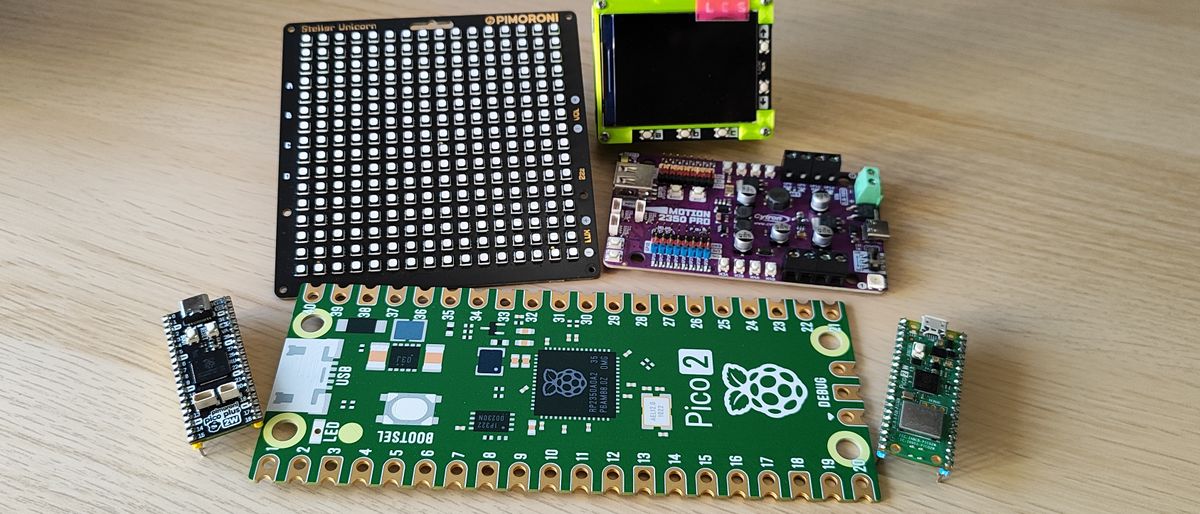
The Raspberry Pi has been around since 2012, selling around 57 million units as of February 2024. All of the main models of Raspberry Pi have historically been powered by Broadcom SoCs, including the latest Raspberry Pi 5. That all changed in January 2021 when we saw the first Raspberry Pi silicon, in the form of the RP2040 microcontroller. In a short space of time the RP2040 has become a major board in the maker community, selling approximately four million units since release. With two Arm Cortex M0+ cores running at 133 MHz, 264KB of RAM and up to 16MB of Flash (stored external to the RP2040), these chips open up a new range of microcontrollers that compete more closely with traditional Arduino boards than a Raspberry Pi 5. Raspberry Pi used the RP2040 in its Lego compatible Build HAT in place of the STM32 that Lego uses in its control bricks.
The Raspberry Pi Pico, and the Raspberry Pi Pico W are both great boards, but there are plenty of RP2040 powered alternatives to choose from, many are designed for a range of tasks. There are now well over 100, third-party boards that offer improvements ranging from smaller boards to built-in Wi-Fi, more storage or may more additional outputs. There are even RP2040-powered keypads and digital displays. All of these boards share the same $1 RP2040 chip, but offer much more than the stock model.
We've compiled the best RP2040 boards to get your projects up and running. These boards can be used for everything from general learning to building Wi-Fi connected robots to implementing basic A.I using TensorFlow Lite.
The recent release of the Raspberry Pi Pico 2 and its RP2350 has seen the RP2040 improved for the second generation of Pico boards. we've just got the first batch of RP2350 based boards in for review so expect to see a few of these boards making their way onto this list.
Shopping Tips for RP2040 Boards
Why you can trust Tom's Hardware
- What board size / how many GPIO pins do you need? Smaller RP2040 boards like Pimoroni's Tiny RP2040, SparkFun's Pro Micro RP2040 and Adafruit's QT Py RP2040 have fewer than the standard 40 pins, but can fit in smaller projects. Do you need the full GPIO, or will a subset be enough?
- Do you need wireless? With the introduction of the Pico W , we now have a low cost and easy to use means to get our projects online. Before that the RP2040 required add on boards such as Adafruit’s Airlift board or Pimoroni’s Pico Wireless Pack. There is also Arduino's Nano RP2040 Connect, which comes with Wi-Fi and Bluetooth built-in, but this board costs over three times that of the Pico W.
- Choose your ecosystem: The pinouts of different RP2040 boards may align with different add-ons. For example, Adafruit’s Feather RP2040 is compatible with around two dozen different FeatherWing, including those which offer wireless connectivity while the Pico itself connects directly to Pimroni’s “packs."
- Specialist connectors such as Stemma QT, Qwiic and Grove are desirable extra features for those that want simple and neat electronics projects. The Pico doesn’t come with any of these, but many third-party boards do. The simplicity of these connections belies the choice of sensors and components offered.
Best Raspberry Pi RP2040 Boards You Can Buy Today
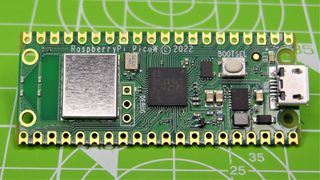
Reasons to buy
Reasons to avoid
The original and least expensive RP2040 board, the Raspberry Pi PIco costs just $4, and while it provided a solid base for projects it lacked Wi-Fi. The $6 Raspberry Pi Pico W introduced Wi-Fi to the Pico, while retaining the exact same pinout as its predecessor. This smart move means that the plethora of RP2040 accessories are available to the Pico W.
Getting online with the Raspberry Pi Pico W is a breeze. Just five lines of MicroPython is all it takes to connect, and from there we have a multitude of options at our disposal. We now have a $6 data collection device, a web controlled robot, or Internet connected information gathering platform.
The Raspberry Pi Pico W adds to the Pico ecosystem. It provides us with a lower power option to the Raspberry Pi Zero W 2 and keeps the Raspberry Pi product range ticking while the global supply chain recovers.
Read: Raspberry Pi Pico W Review
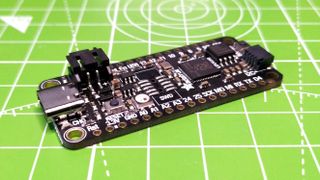
Reasons to buy
Reasons to avoid
Adafruit, partners in the RP2040 project have released many great RP2040 boards in a short space of time. The company has its own ecosystem of form factors and its largest, the Feather, is where we saw their first RP2040 system. Designed to take advantage of an expansive range of add-ons called “FeatherWings”, the Feather RP2040 has fewer pins than a typical Raspberry Pi Pico, but the choice of pins is curated to give us the best that the RP2040 can offer.
What we lose in GPIO pins we gain in onboard LiPo / Li-Ion battery charging, great pin labeling and Stemma QT, Adafruit’s connector of choice for components that connect using I2C. With Stemma QT we have none of the messy wiring and polarity issues, enabling us to focus on the project and not our wiring.
If you’re looking for the most versatile RP2040 board on the market, look no further. Sure, we pay a premium over the Raspberry Pi Pico, but the Adafruit Feather RP2040 is a refined product that is ready to drop into your next project.
Read: Adafruit Feather RP2040 Review
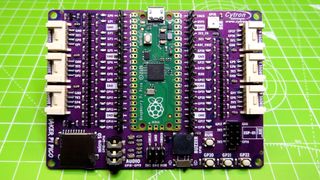
Reasons to buy
Reasons to avoid
The Raspberry Pi Pico is a fun and inexpensive way to get into coding and electronics. After buying a Pico, we need to also buy extra components to expand its scope and this can become costly and complicated. The Maker Pi Pico crams a lot of extra functions into a small package all for less than $10, including a pre-soldered Raspberry Pi Pico.
For $10, the sheer amount of features is amazing. We have a micro SD card reader, buzzer / 3.6mm audio jack, NeoPixel, all of the GPIO pins broken out for use and we have six Grove connectors for use with compatible components. Each of the GPIO pins has a useful LED that can be used to quickly debug an issue. The included ESP-01 header enables basic Wi-Fi access and, since we wrote our review, Cytron has released an updated guide on how to get the Maker Pi Pico connected to wireless. For $10 this board is hard to beat!
Read: Cytron Maker Pi Pico Review
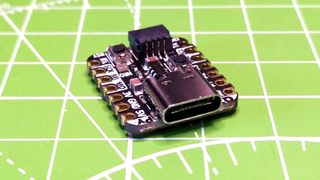
Reasons to buy
Reasons to avoid
Adafruit’s QT Py RP2040 is similar to Pimoroni’s Tiny 2040. We have the RP2040 squeezed into the smallest package and we have a curated selection of GPIO pins for our projects. Adafruit’s QTPy RP2040 has castellated edges, designed to surface mount the board into a project and it features a Stemma QT / Qwiic connector which breaks out an additional I2C connection for use with Stemma QT / Qwiic compatible components, a useful and tidy solution for rapid prototyping.
The low cost and ease of use afforded by the QTPy RP2040 is amplified by Adafruit’s MicroPython fork, CircuitPython, which has many libraries of code for use with Stemma QT / Qwiic components. Even if you already own a Raspberry Pi Pico, the QTPy RP2040 should still be part of your project box.
Read: Adafruit QT Py RP2040 Review
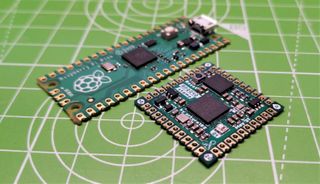
5. RP2040 Stamp
Our expert review:
Reasons to buy
Reasons to avoid
Solder Party’s RP2040 Stamp is a $12, one-inch square board resembles a postage stamp but emblazoned on the center is the familiar RP2040 SoC, along with 8MB of flash storage and a full complement of GPIO pins forming a perimeter of castellations around the board.
RP2040 Stamp is designed for use in your own PCBs. The castellations and onboard LiPo charging system means that most of the hard work is done for us. This is a smartly designed board which we can see being used in a plethora of new projects.
Read: Solder Party RP2040 Stamp Review
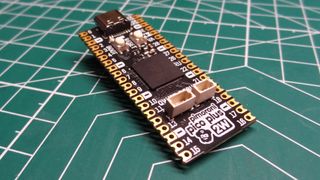
Reasons to buy
Reasons to avoid
Pimoroni’s Pico Plus 2W is the Raspberry Pi Pico 2 W with all the extra features! We get the basic 520KB of SRAM, but an additional 8MB of PSRAM, and 16MB of QSPI storage and we get Wi-Fi and Bluetooth via the Raspberry Pi RM-2 chip.
Yes, Pimoroni beat Raspberry Pi to the punch and released a Wi-Fi enabled RP2350 based board before them. The Pimroni Pico Plus 2 W is a powerful platform for microcontroller based projects, and would be useful in emulation and AI related projects.
Read: Pimoroni Pico Plus 2 W Review
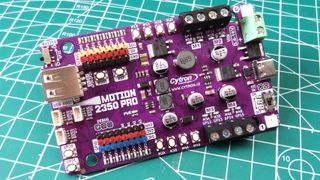
Reasons to buy
Reasons to avoid
As soon as the Raspberry Pi Pico’2 RP2350 was released, Cytron had another great board ready for release. The Motion 2350 Pro is unashamedly designed with robotics and kinetic projects in mind. We can control four motors and eight servos at the same time!
The usual Cytron quality oozes from the board, clear silkscreen labels, Stemma QT, versatile power input and buttons to test motors before writing any code. This is a great board to start your RP2350 journey.
Read: Cytron Motion 2350 Pro Review
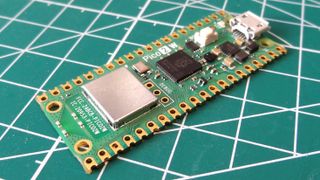
Reasons to buy
Reasons to avoid
The Raspberry Pi Pico 2 burst onto the scene in mid-2024, and while it was a great board it was missing something. Wi-Fi! The Raspberry Pi Pico 2 W brings the same RP2350 SoC, with either a dual-core Arm Cortex M33 or a dual core RISC-V Hazard CPU, but the addition of Wi-Fi and Bluetooth makes this a more enticing purchase.
The Raspberry Pi Pico 2 W has the same GPIO pinout, and is compatible with the same add-ons and programming languages, making it a drop-in replacement for the Pico W.
Read: Raspberry Pi Pico 2 W Review
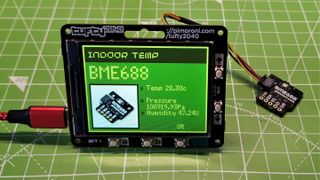
Reasons to buy
Reasons to avoid
A bright and clear 2.4 inch IPS LCD that you can wear around your neck, or keep on your desk. Powered by the RP2040, Tufty 2040 is all about the display. Front and center this is a great display with good viewing angles and rich colors. Designed to be worn as a conference badge, Tufty 2040 is much more than a vanity project.
Around the back we see connections for Qw/ST (StemmaQT / Qwiic) sensors, which means we can easily use Tufty 2040 as a desktop data station for air quality and temperature data. Power can come from one of three sources. USB C, AAA batteries or LiPo. The AAA batteries and LiPo options connect via a dedicated JST-PH connector, but note that there is no builtin charging circuit so your batteries will need to be charged externally.
The small size, easy to use MicroPython library and Qw/ST connector elevate Tufty 2040 from being “just a badge” into a great data visualization tool. Sure we would love to see Wi-Fi as an option, Tufty 2040 came out just before the Raspberry Pi Pico W, so the overlap is unfortunate. That said, Tufty 2040 is still a great purchase.
Read: Pimoroni Tufty 2040 Review
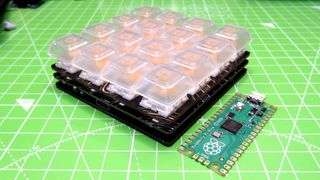
Reasons to buy
Reasons to avoid
Pimoroni’s Keybow 2040 is something special in the RP2040 range: a programmable 16-key keypad, powered by the RP2040. This isn’t a board that you use to build a project, rather it is something that we integrate into a project. With 16 mechanical keys, each with an addressable NeoPixel LED we can build the Keybow 2040 into our daily workflow.
The board ships with Pimoroni’s fork of MicroPython with modules to use Keybow 2040, but you will only get the best from this board via Adafruit’s CircuitPython and its USB HID module. Using this we can assign keypresses, media keys and mouse movements to any of the keys, making short work of tedious tasks.
Read: Pimoroni Keybow 2040 Review
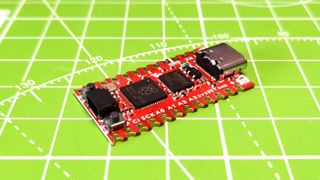
Reasons to buy
Reasons to avoid
The $10 SparkFun Pro Micro RP2040 is the cheapest model in SparkFun’s range and follows a classic design that resembles an Arduino Nano board layout which is at home in a breadboard and embedded into your projects. We have fewer GPIO pins than a Pico, but more than Adafruit’s QTPy RP2040 while retaining a small layout.
SparkFun’s Qwiic connector, compatible with Adafruit’s Stemma QT, enables us to use many of the compatible components such as sensors and displays with the Pro Micro and for $10 this is a Swiss Army Knife of a board that provides a cost effective and multi-purpose means to explore the RP2040 ecosystem.
Read: SparkFun Pro Micro RP2040 Review
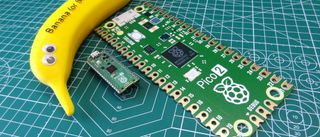
Reasons to buy
Reasons to avoid
What’s better than a Raspberry Pi Pico 2? A comically oversized (3.5 times) Raspberry Pi Pico 2 in the form of Pimoroni’s Pico Jumbo. This isn’t a comedy prop, it really is a fully working Pico 2, soldered into a larger PCB. Each of the “GPIO pins” can be used with crocodile clips, or banana plugs to make large and robust connections. This makes it a great visual tool for the classroom, and your event demo table.
Read: Pimoroni Pico Jumbo Review
Stay On the Cutting Edge: Get the Tom's Hardware Newsletter
Get Tom's Hardware's best news and in-depth reviews, straight to your inbox.
Les Pounder is an associate editor at Tom's Hardware. He is a creative technologist and for seven years has created projects to educate and inspire minds both young and old. He has worked with the Raspberry Pi Foundation to write and deliver their teacher training program "Picademy".
-
Leptir Adafruit is a gold standard??!! Clearly the author never had to deal with their customer support because if he did, he'd know that Adafruit is the nastiest, most pathetic company that has ever existed. If you don't trust me, read reviews on Google or Yelp to see how they deal with anybody who has any sort of problem with their products.Reply -
bit_user ReplyWith two Arm Cortex M0+ cores running at 133 MHz, 264KB of RAM and up to 16MB of Flash
Hmm... In 1988, my family got a PC XT, which had a 4.77 MHz 8088, a 10 MB HDD, and I think 640 kB of RAM (but I'm not too sure about that).
By comparison, it's way down on memory, at least for the amount of processing power it has. If it had a few MB of RAM, then it should have ample performance to run Doom or even Quake at 320x200. -
The_Real_Insidious Uh. Pricing seems wildly off. The article says the Pimoroni Enviro Indoor is $6. Which would be fantastic. But on the Pimoroni site it's listed for £36. That's around $44 USD, 7.3x your listed price.Reply
The price is correct on the linked article for this board. -
Stately The Raspberry Pi Pico W has had bluetooth (traditional and LE) for over six months now:Reply
Bluetooth added to existing Pico W
You should update this article and your original review of the Pico. Thanks! -
Stately Reply
Interesting 🤨Stately said:The Raspberry Pi Pico W has had bluetooth (traditional and LE) for over six months now:
Bluetooth added to existing Pico W
You should update this article and your original review of the Pico. Thanks!
They‘re going to have a YouTube episode about Bluetooth on the Pi Pico:
1752358680404632004View: https://twitter.com/biglesp/status/1752358680404632004
